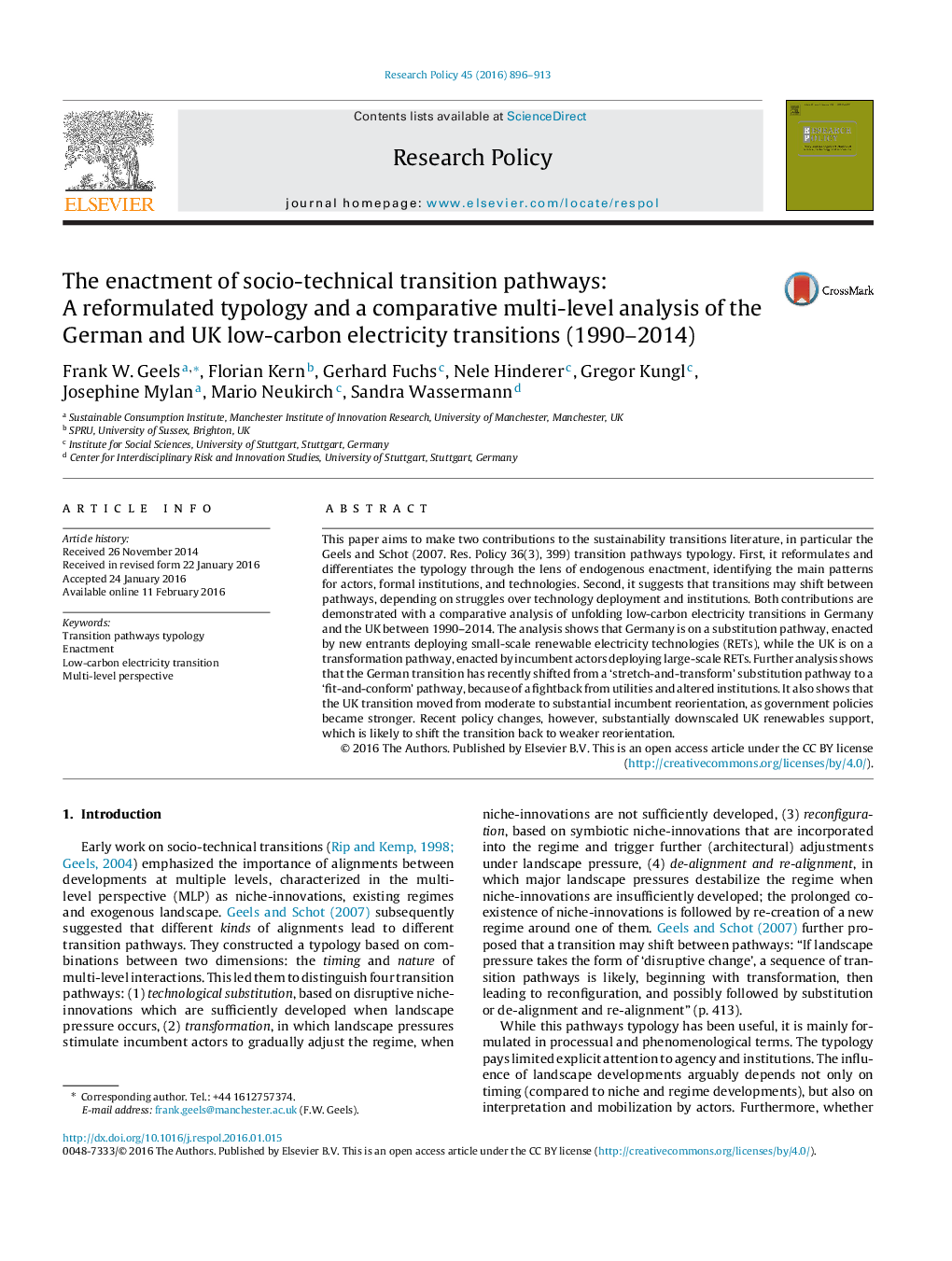| Article ID | Journal | Published Year | Pages | File Type |
|---|---|---|---|---|
| 10483202 | Research Policy | 2016 | 18 Pages |
Abstract
This paper aims to make two contributions to the sustainability transitions literature, in particular the Geels and Schot (2007. Res. Policy 36(3), 399) transition pathways typology. First, it reformulates and differentiates the typology through the lens of endogenous enactment, identifying the main patterns for actors, formal institutions, and technologies. Second, it suggests that transitions may shift between pathways, depending on struggles over technology deployment and institutions. Both contributions are demonstrated with a comparative analysis of unfolding low-carbon electricity transitions in Germany and the UK between 1990-2014. The analysis shows that Germany is on a substitution pathway, enacted by new entrants deploying small-scale renewable electricity technologies (RETs), while the UK is on a transformation pathway, enacted by incumbent actors deploying large-scale RETs. Further analysis shows that the German transition has recently shifted from a 'stretch-and-transform' substitution pathway to a 'fit-and-conform' pathway, because of a fightback from utilities and altered institutions. It also shows that the UK transition moved from moderate to substantial incumbent reorientation, as government policies became stronger. Recent policy changes, however, substantially downscaled UK renewables support, which is likely to shift the transition back to weaker reorientation.
Keywords
Related Topics
Social Sciences and Humanities
Business, Management and Accounting
Business and International Management
Authors
Frank W. Geels, Florian Kern, Gerhard Fuchs, Nele Hinderer, Gregor Kungl, Josephine Mylan, Mario Neukirch, Sandra Wassermann,
